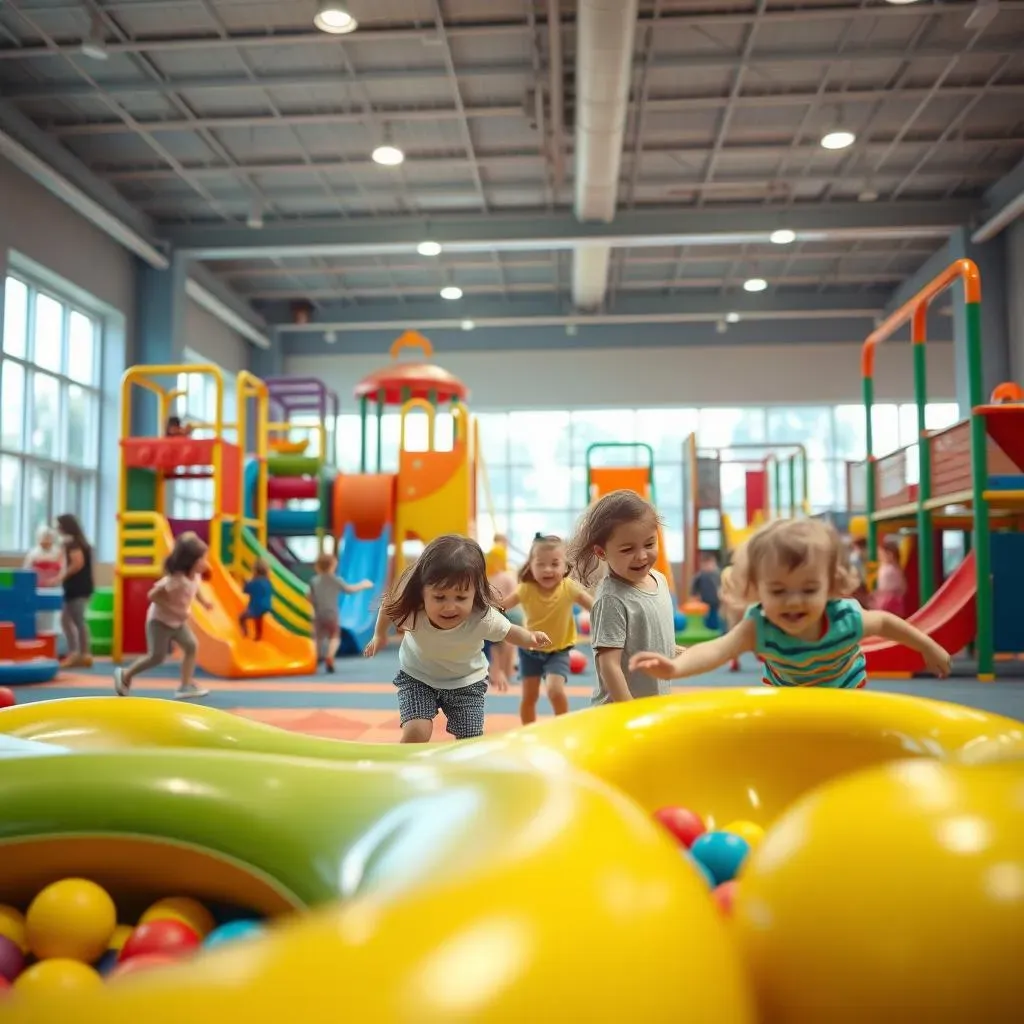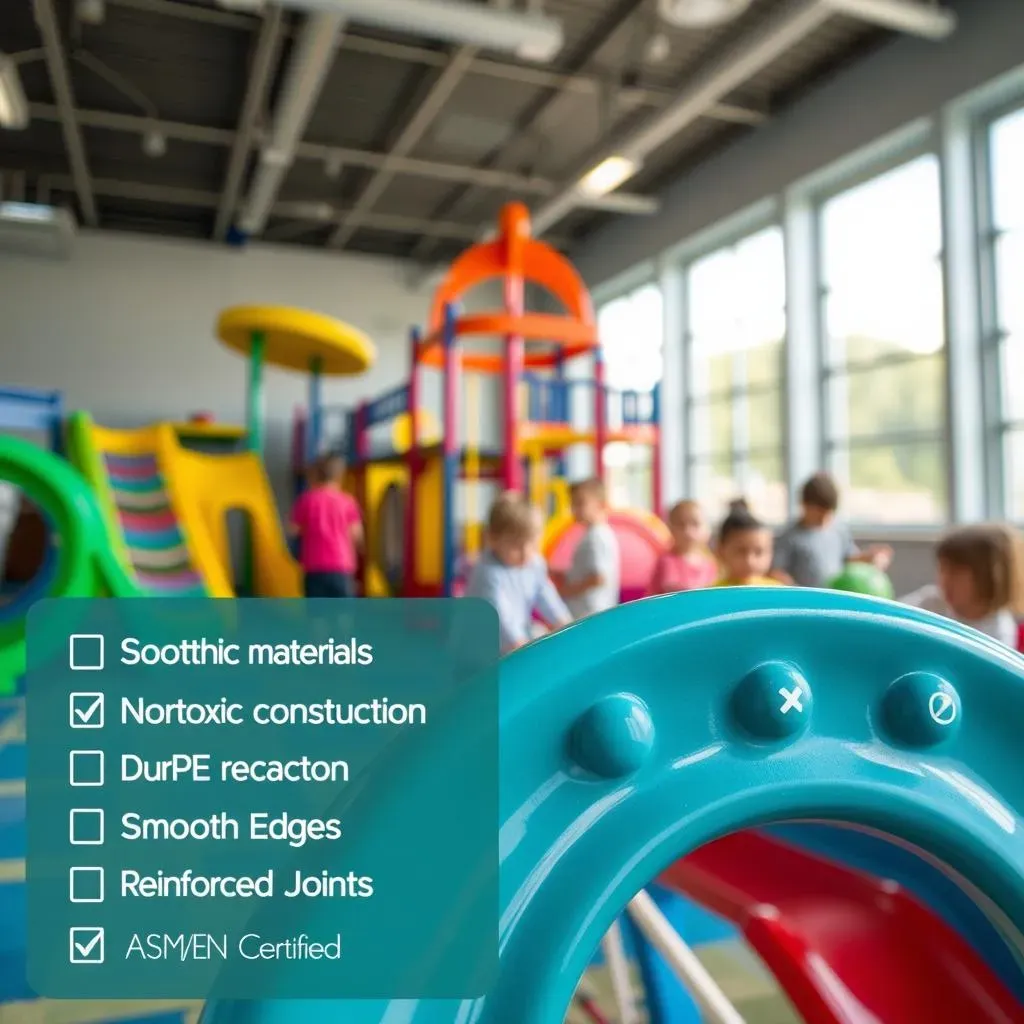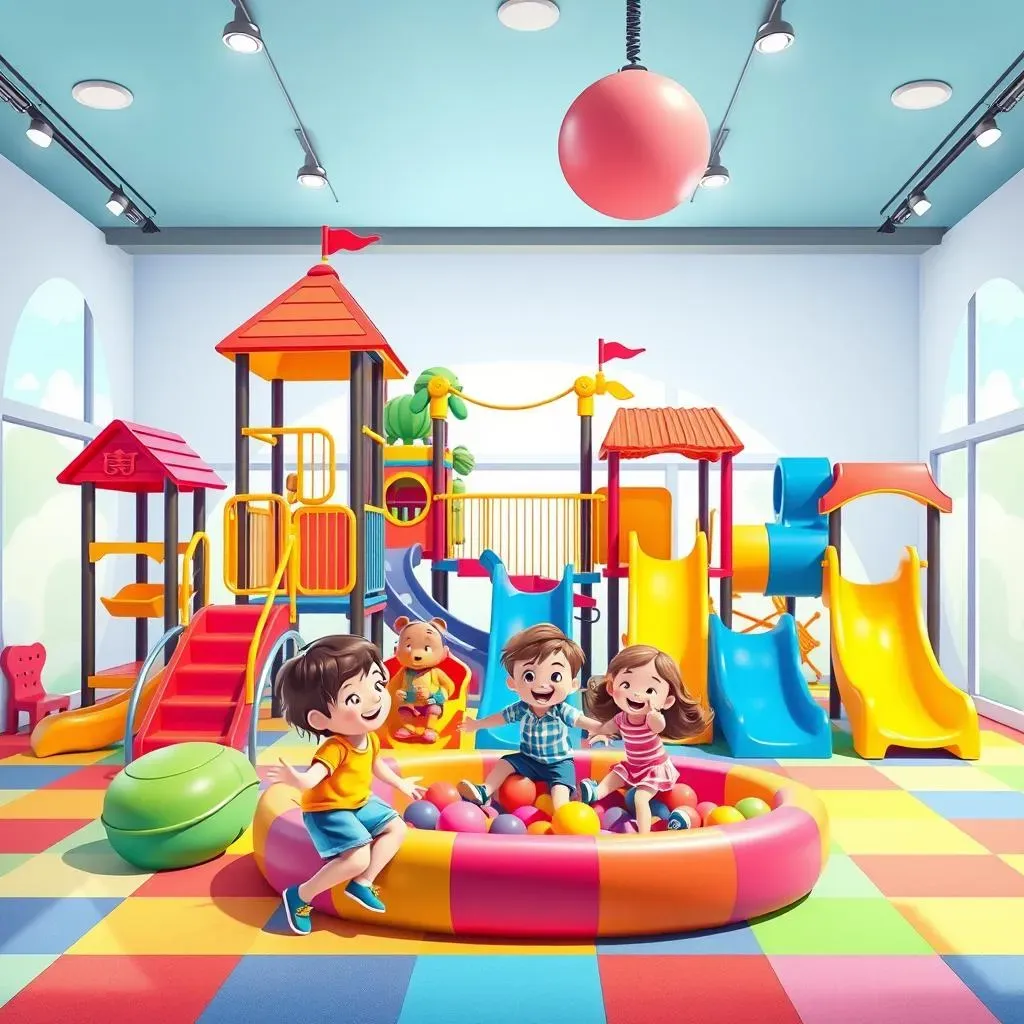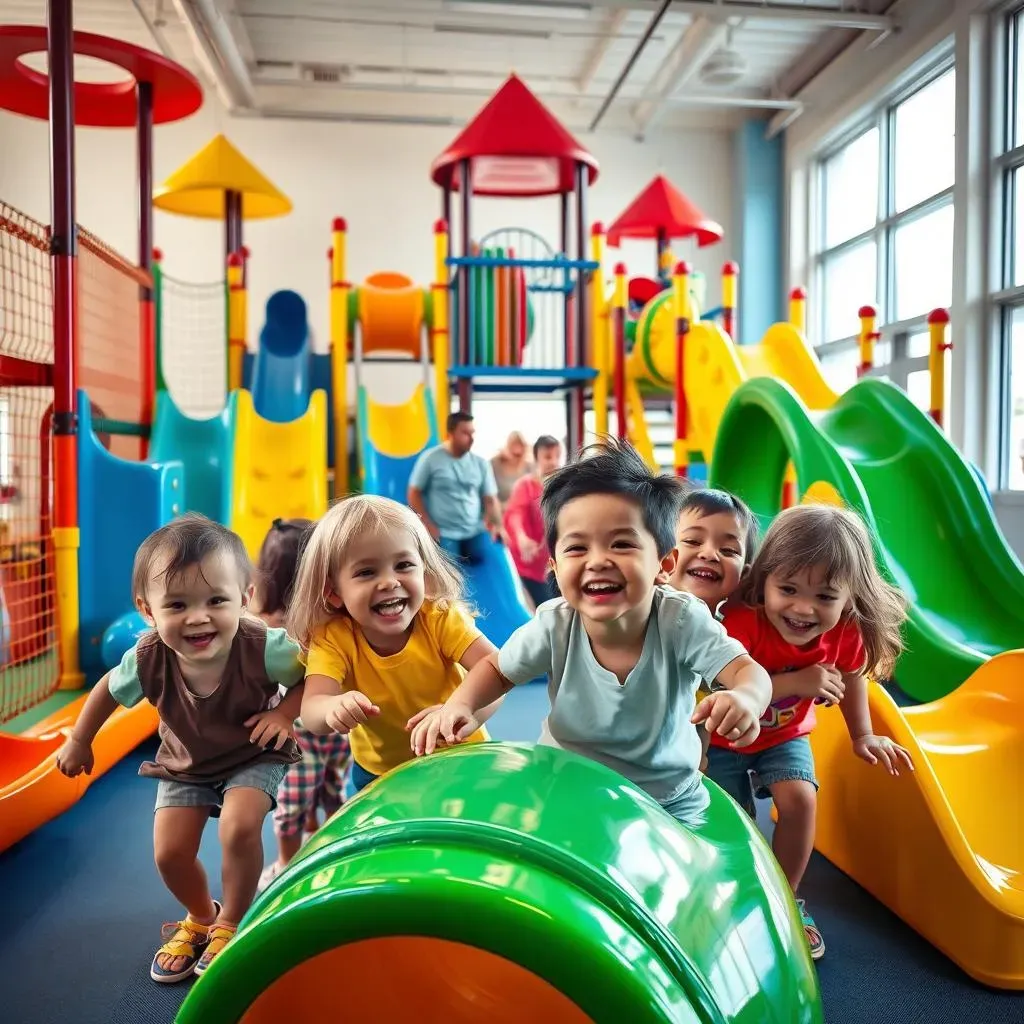Table of Contents
Looking to create a fun, safe, and engaging play space for kids? You've come to the right place! Buying indoor playground equipment is a fantastic way to keep children active, entertained, and developing crucial motor skills, no matter the weather outside. But with so many options available, from sprawling commercial setups to cozy home gyms, knowing where to start can feel overwhelming. This guide is designed to simplify the process, offering a clear roadmap to help you make the best choice for your needs and budget. We'll explore the essential factors to consider before you buy indoor playground equipment, including space requirements, age appropriateness, safety standards, and the types of activities you want to offer. We'll also dive into a comparison of the top equipment options on the market, providing detailed insights to help you narrow down your selection. So, whether you're outfitting a daycare center, a community space, or simply creating a playful haven in your own home, get ready to discover everything you need to know about indoor playground equipment to buy and bring your vision to life! Get ready to transform any space into a children's paradise.
Understanding Your Needs Before You Buy Indoor Playground Equipment

Understanding Your Needs Before You Buy Indoor Playground Equipment
Assessing Your Space and Budget
Before you even start browsing, take a good, hard look at your available space. Measure everything! Consider the height, width, and length of the area where you plan to install the indoor playground equipment. Don't forget to account for ceiling height, as some structures require significant vertical clearance. Think about existing features like windows, doors, and support beams that might impact your layout. Also, be realistic about your budget. Indoor playgrounds can range from a few hundred dollars for a simple climber to tens of thousands for elaborate, custom installations. Having a clear budget in mind will help you narrow down your options and avoid overspending.
Think about the long game. Sure, that compact climber looks cute now, but will it still be engaging for your kids in a year or two? Consider equipment that can adapt and grow with their abilities. Modular systems are great for this. Also, don't forget about the floor! Safety surfacing is a must, and the cost can add up. Rubber tiles, poured-in-place rubber, or even thick foam mats are all viable options. Factor in the cost of installation for both the equipment and the safety surfacing. Some companies offer installation services, while others require you to hire a professional. Finally, consider ongoing maintenance costs, such as cleaning supplies and replacement parts.
Is it better to buy a small playground now and upgrade later, or save up for a larger, more versatile option from the start? Here is an overview of the considerations:
- Small Playground Now:
- Pros: Lower initial cost, immediate enjoyment, fits smaller spaces.
- Cons: May be outgrown quickly, limited play options, potential for needing to replace sooner.
- Larger, More Versatile Option:
- Pros: Longer lifespan, more varied play, better long-term value, accommodates more children.
- Cons: Higher initial cost, requires more space, may take longer to save for.
Identifying the Target Age Group and Play Style
Who will be using the indoor playground equipment? Toddlers have very different needs and abilities than older children. Toddlers require soft, padded equipment with low climbing heights and simple activities. Think soft play structures, ball pits, and gentle slides. Older children, on the other hand, crave more challenging activities like climbing walls, rope courses, and slides with steeper drops. Consider the age range of the children who will be using the equipment most often and choose options that are appropriate for their developmental stage. Selecting equipment that is too advanced can lead to frustration and injuries, while equipment that is too simple will quickly lose its appeal.
What kind of play do you want to encourage? Do you want to promote physical activity, social interaction, or creative expression? Different types of equipment cater to different play styles. Climbing structures and obstacle courses are great for developing gross motor skills and coordination. Ball pits and sensory panels provide tactile stimulation and encourage social interaction. Themed playhouses and art easels foster creativity and imagination. Think about the types of activities that your children enjoy most and choose equipment that aligns with their interests. You can even create a multi-zone playground with different areas dedicated to different types of play.
What are the benefits of each playground equipment?
Equipment Type | Benefits |
|---|---|
Climbing Structures | Gross motor skills, coordination, strength |
Ball Pits | Tactile stimulation, social interaction, sensory exploration |
Themed Playhouses | Creativity, imagination, role-playing |
Slides | Balance, coordination, thrill, fun |
Key Features to Consider When Choosing Indoor Playground Equipment

Key Features to Consider When Choosing Indoor Playground Equipment
Safety First: Materials and Construction
When diving into the world of indoor playground equipment, safety should be your absolute North Star. Seriously, don't skimp on this. Start by scrutinizing the materials used. Look for non-toxic, durable options that can withstand the daily wear and tear of energetic kids. Think high-quality plastics, sturdy metals, and soft, impact-absorbing materials for padding. Then, examine the construction. Are the joints reinforced? Are the edges smooth and rounded? Are there any potential pinch points or tripping hazards? A well-constructed playground will not only last longer but also minimize the risk of injuries. Check for certifications like ASTM or EN standards, which indicate that the equipment has been tested and meets specific safety requirements.
Also, think about the long-term. Will the materials fade, crack, or degrade over time? Opt for UV-resistant materials if the playground will be exposed to sunlight. Consider the ease of cleaning and maintenance. Surfaces that are easy to wipe down will help prevent the spread of germs and keep the playground looking its best. Don't be afraid to ask manufacturers about the materials they use and the testing they've conducted. A reputable company will be transparent about their safety standards and willing to provide documentation to back up their claims.
Here's a quick checklist to keep in mind:
- Non-toxic materials
- Durable construction
- Smooth edges and rounded corners
- Reinforced joints
- Compliance with safety standards (ASTM, EN)
- Easy to clean and maintain
Durability and Longevity: Investing in Quality
Let's face it, kids can be rough on things. That's why durability is a key feature to consider when choosing indoor playground equipment. You want something that can withstand years of jumping, climbing, and sliding without falling apart. Look for equipment made from heavy-duty materials that are resistant to wear and tear. Check the weight capacity of each component to ensure it can safely accommodate the intended users. Consider the overall design and construction. Is it built to last? Are there any weak points that could be prone to breakage? A well-built playground will not only provide years of enjoyment but also save you money in the long run by reducing the need for repairs and replacements.
Think about the warranty offered by the manufacturer. A longer warranty is often a sign of confidence in the product's quality and durability. Read the fine print to understand what is covered and what is not. Also, consider the availability of replacement parts. If a component does break, can you easily order a replacement? Some companies offer a wide range of spare parts, while others may require you to purchase an entirely new unit. Finally, think about the resale value of the equipment. If you ever decide to upgrade or move, will you be able to recoup some of your investment by selling the playground to someone else?
Here's a comparison of different materials and their durability:
Material | Durability | Pros | Cons |
|---|---|---|---|
High-Density Polyethylene (HDPE) | Excellent | Weather-resistant, easy to clean, durable | Can be more expensive |
Powder-Coated Steel | Very Good | Strong, rust-resistant, long-lasting | Can be heavy, may require professional installation |
Soft Foam | Moderate | Safe, comfortable, lightweight | Can be easily damaged, requires frequent cleaning |
Top Indoor Playground Equipment Options to Buy: A Detailed Comparison

Top Indoor Playground Equipment Options to Buy: A Detailed Comparison
Modular Play Structures: Build Your Own Adventure
Modular play structures are like the LEGOs of the indoor playground world. Seriously, these things are awesome. You get a basic framework, and then you can add and rearrange different components to create a custom play space that perfectly fits your needs and preferences. Slides, climbing walls, tunnels, bridges – you name it, you can probably add it. The beauty of modular systems is their flexibility. As your kids grow and their interests change, you can reconfigure the playground to keep them engaged. Plus, if you ever move or need to downsize, you can easily disassemble and reassemble the structure in a new location. Look for systems with durable connectors and sturdy construction to ensure they can withstand years of use.
Also, consider the level of customization offered by different manufacturers. Some companies offer a wide range of pre-designed modules, while others allow you to create completely custom components. Think about the types of activities you want to include in your playground and choose modules that support those activities. Do you want to encourage climbing? Add a climbing wall or a rope ladder. Do you want to promote social interaction? Include a playhouse or a ball pit. The possibilities are endless! Just remember to factor in the cost of each module when budgeting for your playground.
Here's a little food for though:
Soft Play Areas: Safe and Fun for Little Ones
If you're catering to toddlers and young children, soft play areas are a must-have. These padded environments provide a safe and comfortable space for little ones to explore and develop their motor skills. Think foam blocks, soft climbers, and padded tunnels – all designed to minimize the risk of bumps and bruises. Soft play areas are also great for sensory stimulation. Look for equipment with different textures, colors, and shapes to engage children's senses and promote cognitive development. Many soft play areas also include interactive elements like sound effects and lights to add an extra layer of fun.
Also, consider the ease of cleaning and maintenance. Soft play equipment can quickly become a breeding ground for germs if it's not properly cleaned. Look for materials that are easy to wipe down and sanitize. Some manufacturers even offer antimicrobial coatings to help prevent the spread of bacteria. Think about the overall design of the soft play area. Is it visually appealing? Does it encourage exploration and interaction? A well-designed soft play area will not only be safe and fun but also stimulate children's imaginations and creativity.
Here's a comparison of different types of soft play equipment:
Equipment Type | Benefits | Considerations |
|---|---|---|
Foam Blocks | Versatile, encourages creativity, develops motor skills | Can be bulky, requires storage space |
Soft Climbers | Promotes physical activity, builds strength and coordination | Requires adequate padding, can be challenging for very young children |
Padded Tunnels | Encourages exploration, provides a sense of adventure | Can be claustrophobic for some children, requires regular cleaning |
Safety Standards and Regulations for Indoor Playground Equipment

Safety Standards and Regulations for Indoor Playground Equipment
Navigating the World of Safety Standards
Alright, let's talk safety – because nothing's more important than ensuring kids have a blast without any ouchies! When you're looking at indoor playground equipment, keep an eye out for compliance with established safety standards. In the US, ASTM International is a big player, setting standards like ASTM F1918 for public playgrounds. In Europe, it's the EN standards, particularly EN 1176. These standards cover everything from material quality and structural integrity to fall heights and impact attenuation. Checking for these certifications is like getting a thumbs-up from the safety police – it means the equipment has been tested and meets specific requirements to minimize risks. Don't be shy about asking manufacturers for proof of compliance; a reputable company will readily provide documentation. Also, don't forget to check your local regulations. Some municipalities may have additional requirements for indoor playgrounds, such as inspections and permits.
Think of safety standards as your secret weapon against playground mishaps. They're not just bureaucratic mumbo jumbo; they're the result of years of research and analysis aimed at preventing injuries. So, do your homework, ask questions, and make sure the equipment you choose meets the highest safety standards. Your peace of mind – and the safety of the children using the playground – is worth it.
Here's a quick rundown of key safety considerations:
- ASTM F1918 (US): Standard Safety Performance Specification for Soft Contained Play Equipment.
- EN 1176 (Europe): Playground equipment standards.
- Fall Height: Ensure adequate safety surfacing to cushion falls.
- Impact Attenuation: Choose surfaces that absorb impact to reduce the risk of head injuries.
- Regular Inspections: Conduct routine inspections to identify and address potential hazards.
The Importance of Proper Installation and Maintenance
So, you've got your super-safe, certified indoor playground equipment. Awesome! But here's the thing: even the best equipment can be dangerous if it's not installed and maintained properly. Proper installation is crucial to ensure the structural integrity of the playground and prevent accidents. Follow the manufacturer's instructions carefully, and don't hesitate to hire a professional installer if you're not comfortable doing it yourself. Once the playground is up and running, regular maintenance is key to keeping it in tip-top shape. Inspect the equipment regularly for signs of wear and tear, such as loose bolts, frayed ropes, or damaged padding. Repair or replace any damaged components immediately. Keep the playground clean and free of debris to prevent slips, trips, and falls. Also, make sure the safety surfacing is in good condition and provides adequate cushioning.
Remember, safety is an ongoing process, not a one-time event. By taking the time to install and maintain your indoor playground equipment properly, you can create a safe and enjoyable play space for children for years to come. It's better to be safe than sorry, right? A well-maintained playground is a happy playground!
Here's a little food for though:
Installation and Maintenance Tips for Your New Indoor Playground Equipment

Installation and Maintenance Tips for Your New Indoor Playground Equipment
Setting Up for Success: Installation Best Practices
Alright, you've got your shiny new indoor playground equipment – time to unleash the fun, right? Hold your horses! Proper installation is absolutely crucial, not just for safety but also for the longevity of your investment. Start by reading the manufacturer's instructions. I know, I know, instructions are boring, but trust me, they're there for a reason. Make sure you have all the necessary tools and hardware before you begin. Enlist a friend or two to help – some of these structures can be surprisingly heavy and awkward to maneuver. Follow the instructions step-by-step, and don't skip any steps. Double-check all connections to ensure they're secure. If you're not comfortable with any part of the installation process, don't hesitate to hire a professional installer. It's better to spend a little extra money upfront than to risk a serious accident later on.
Also, think about the layout of the playground. Make sure there's enough space around the equipment for children to move freely without bumping into walls or other obstacles. Consider the placement of electrical outlets and other potential hazards. Keep them out of reach of children or cover them with safety caps. Once the playground is installed, conduct a thorough inspection to ensure everything is safe and secure. Test all the features, such as slides, climbers, and tunnels, to make sure they're working properly. If you find any problems, address them immediately. Remember, a safe playground is a fun playground!
Here's a quick checklist to keep in mind during installation:
- Read the manufacturer's instructions carefully.
- Gather all necessary tools and hardware.
- Enlist help from friends or hire a professional installer.
- Follow the instructions step-by-step.
- Double-check all connections.
- Ensure adequate spacing around the equipment.
- Address any potential hazards.
- Conduct a thorough inspection after installation.
Keeping the Fun Alive: Regular Maintenance and Cleaning
your indoor playground is up, running, and the kids are loving it. Now comes the less glamorous but equally important part: maintenance. Think of it like brushing your teeth – you gotta do it regularly to keep things healthy and happy. Regular maintenance will not only extend the lifespan of your equipment but also ensure it remains safe for children to use. Start by establishing a regular cleaning schedule. Wipe down surfaces with a mild soap and water solution to remove dirt, grime, and germs. Pay special attention to high-touch areas like handrails, slides, and tunnels. Disinfect the playground regularly, especially during cold and flu season. Use a non-toxic disinfectant that is safe for children. Inspect the equipment regularly for signs of wear and tear. Check for loose bolts, frayed ropes, damaged padding, and any other potential hazards. Repair or replace any damaged components immediately. Keep the area around the playground free of clutter and debris to prevent slips, trips, and falls.
Also, think about the long-term. Consider investing in a maintenance contract with a professional playground maintenance company. They can provide regular inspections, repairs, and cleaning services to keep your playground in top condition. Replace worn-out parts promptly. Don't wait until something breaks completely before replacing it. Regular replacement of worn parts will prevent more serious damage and extend the lifespan of your equipment. Keep records of all maintenance and repairs. This will help you track the condition of your equipment and identify any recurring problems. Finally, train your staff or family members on proper maintenance procedures. Everyone who uses the playground should be aware of the importance of maintenance and how to identify potential hazards.
Here's a comparison of different cleaning and maintenance tasks:
Task | Frequency | Purpose |
|---|---|---|
Wiping down surfaces | Daily | Remove dirt, grime, and germs |
Disinfecting | Weekly (or more often during cold and flu season) | Kill bacteria and viruses |
Inspecting for wear and tear | Weekly | Identify potential hazards |
Tightening bolts and screws | Monthly | Maintain structural integrity |
Replacing worn parts | As needed | Prevent serious damage |
Conclusion: Making the Right Choice for Your Indoor Playground
Investing in indoor playground equipment is an investment in children's health, development, and happiness. By carefully considering your needs, exploring the available options, and prioritizing safety and quality, you can create a space that sparks imagination, encourages physical activity, and provides endless hours of fun. Remember to regularly inspect and maintain your equipment to ensure its longevity and the safety of its users. With the right planning and execution, your indoor playground will be a cherished space for years to come, fostering growth, creativity, and unforgettable memories.